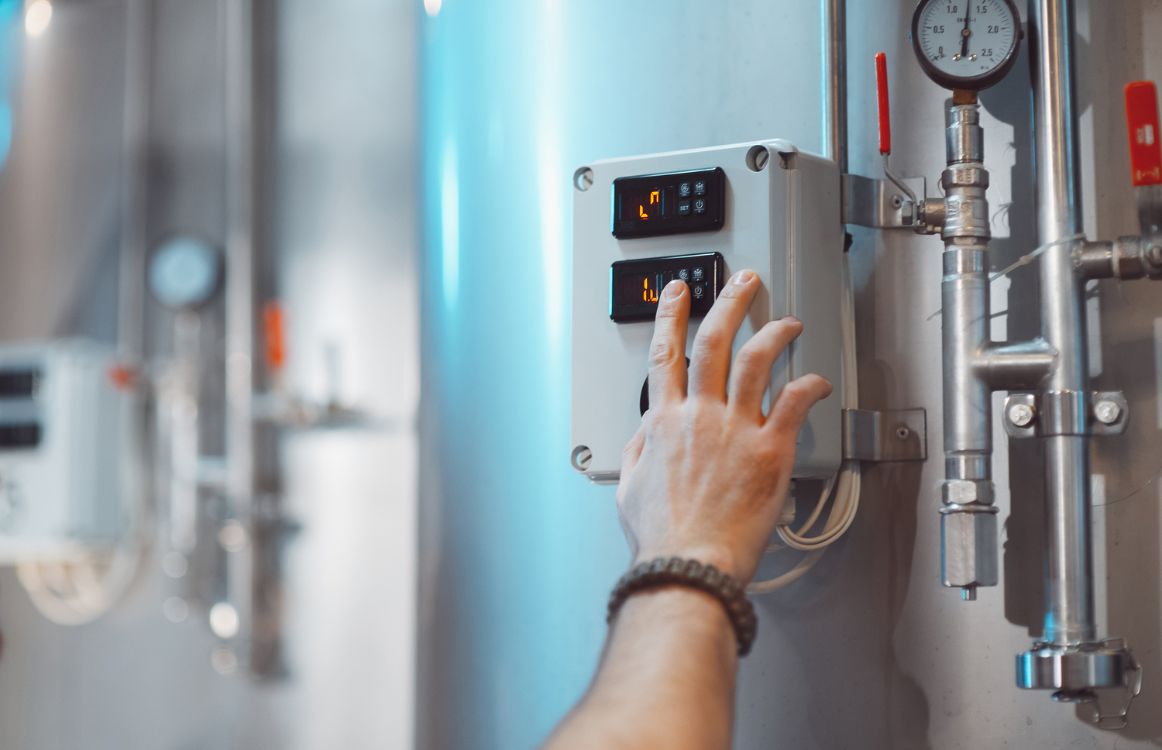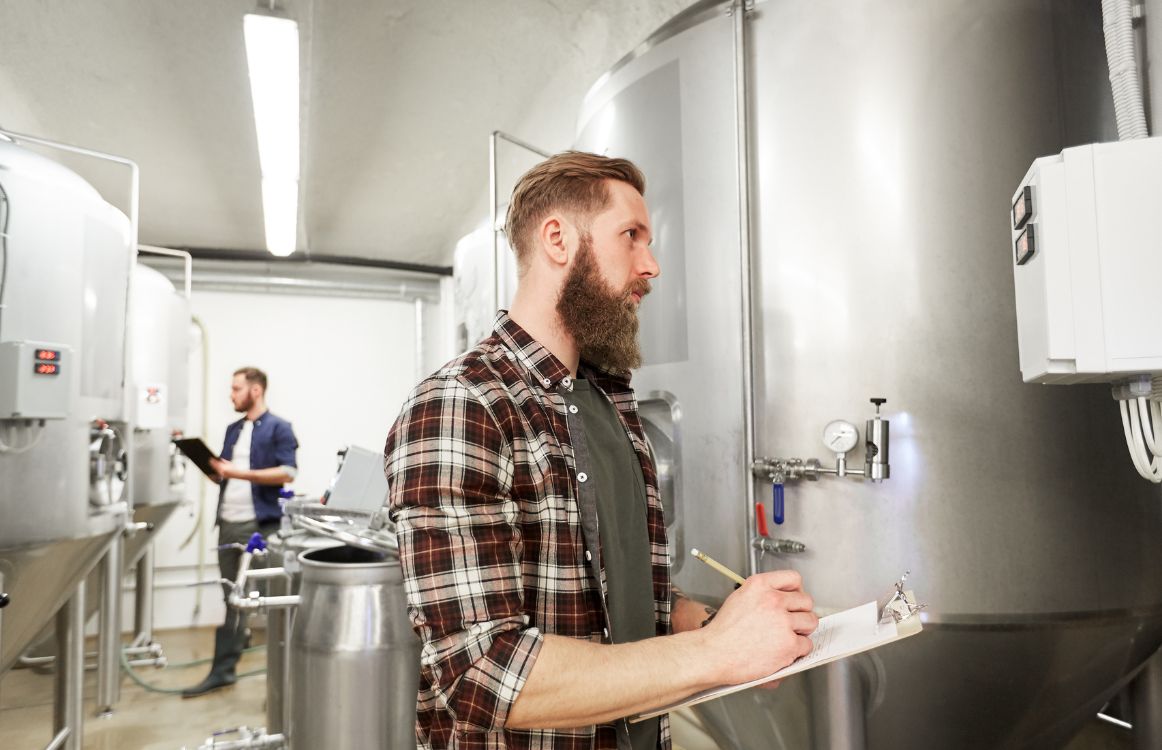Ideal Beer Tunnel Pasteurization Temperature
To pasteurize or not to pasteurize is a big question for most brewers. There are several pros and cons to both and much to consider if you do decide to pasteurize beer, like whether to invest in the equipment for tunnel pasteurization or flash pasteurization, and whether the beer tunnel pasteurization temperature is preferred to the flash pasteurization temperature.
In any event, it is worth exploring all of the options.

Why Pasteurize Beer?
First, unless you are a large, commercial brewer with a national reach, pasteurization is an unnecessary and expensive step. Sometimes, in brewing, we take for granted that we must do all the things major corporate breweries do, but nothing could be further from the truth. The reality is that, while pasteurization does wonders for commercial breweries that ship their beer nationally and even internationally, it often does more harm than good for smaller, craft brewers with a more local reach.
Pasteurization does ward against almost all pathogens and unwanted bacteria and yeast. It also halts the growth of any yeast remaining in the bottle after packaging. However, the alcohol in the beer will serve this same function. The difference is that the pasteurization process provides for a longer, more stable, shelf life.
Unpasteurized beer only has a shelf life of about 60 days while pasteurized beer can last up to 9 months. This difference is precisely because of the killing off of bacteria and yeast still growing in the beer. The problem with that “killing” is that it also creates for a flat beer with less flavor and aroma. That’s what happens when you basically boil a beverage meant to be fermented and, essentially, living. It is precisely the yeast and even perhaps small amounts of living yeast that keep your beer tasting fresh and crisp with complexity. When you kill that, you end up with a beer with less of that to rave about.
Still, if you have gone national, and you cannot simply build breweries across the nation to keep your beer “local,” you likely have to sacrifice flavor for shelf life. You can’t make a master batch to ship across the country only to have it go “bad” before it arrives.
Further, pasteurizing beer allows you to store it on the shelf for months rather than keeping it chilled.
Yes, in an ideal world, everyone would get their hands on your beer days after it is bottled or kegged, but we don’t live in an ideal world. So, if you must pasteurize, you must choose between tunnel pasteurization and flash pasteurization.
Tunnel Pasteurization
Tunnel pasteurization is easier to do, but it can only be done with cans and bottles. During this process, the beer is brewed, racked, and canned or bottled, essentially ready to go to market, and then pasteurized by running the cans or bottles through a conveyor system that heats the cans or bottles up to the point that the interior liquid is heated through. Then the cans or bottles are quickly cooled off and sent off to market.
Beer Tunnel Pasteurization Temperature and Equipment
To employ tunnel pasteurization, you will need the conveyor system in order to fully immerse your beer in its packaging for at least 30 minutes at a temperature of 140 degrees Fahrenheit. This system effectively kills off any pathogens and yeast remaining in the bottle or can.
The largest benefit to this type of pasteurization is that you do not have to worry about introducing microbes to already pasteurized beer during packaging. The downside is a brew that has been heated to such a high temperature for so long, also killing off a good amount of flavor and aroma in that time.
Flash Pasteurization

Flash pasteurization requires more steps, but it can be done for bottles, cans, and kegs, and it only requires a few seconds of time at those high temperatures. To flash pasteurize, the beer is send through a pipe within a pipe on its way from one vessel to another. The interior pipe contains the beer and the external pipe contains hot water. As the beer passes through that pipe, it is pasteurized, effectively killing off unwanted bacteria and yeast.
Beer Flash Pasteurization Temperature and Equipment
The equipment tends to be less expensive for flash pasteurization, as it merely requires the tubing and the heating systems, and the process is much quicker. The beer is run through those pipes and heated to 160 degrees Fahrenheit for 20 seconds before it is quickly cooled back down. It is called flash pasteurization as the thinking goes that the shorter time the beer is heated the better. Many flavor tests will agree. The less time you can have your beer hot, the better in terms of flavor and aroma. The largest downside to this type of pasteurization is that you have to be hyper vigilant about the packaging process so as not to introduce new pathogens to the beer once it has been effectively sanitized.
Which Is Better?
The question of which is the better form of pasteurization is really up to the brewer. In terms of flavor and aroma for your loyal fans, if you must pasteurize, it seems that flash pasteurization would be the best route, but, again, you are taking on a tremendous task to ensure the packaging process has the strictest standards of sanitation. You don’t want to pasteurize your beer only to have it be wasted by the introduction of new bacteria during bottling or kegging.
For those hoping to avoid any unnecessary risks, tunnel pasteurization seems the best route to take, though the upfront investment may be a big larger.
Either way you go, the decision to pasteurize, and the method you take, is a personal one, personal to the specific brewery, the risks you are willing to take, and the rewards you may get at the end of the line.
Cheers!
Are you still pitching fresh yeast every time? By reusing your yeast, you can save up to hundreds of thousands of dollars per year on just yeast alone!
Join the hundreds of brewers from all around the world using the Smartest Automated Yeast Cell Counter! Request a Free Demo Account today and experience firsthand how Oculyze can take your brewery to the next level!
Sources:
- https://www.smartmachine.com/why-use-a-tunnel-pasteurizer-for-beer/
- https://lionbreweryco.com/to-pasteurize-or-not-to-pasteurize/
- https://cbp.goodnature.com/beer-pasteurization-history-methods-equipment
Stay on top on important fermentation insights – subscribe to our monthly newsletter and receive a hand-picked selection of our most relevant articles straight to your inbox.
Never miss a beat and get real time updates with a new article each workday by subscribing our social media channels.
Instagram | Facebook | Twitter | YouTube


